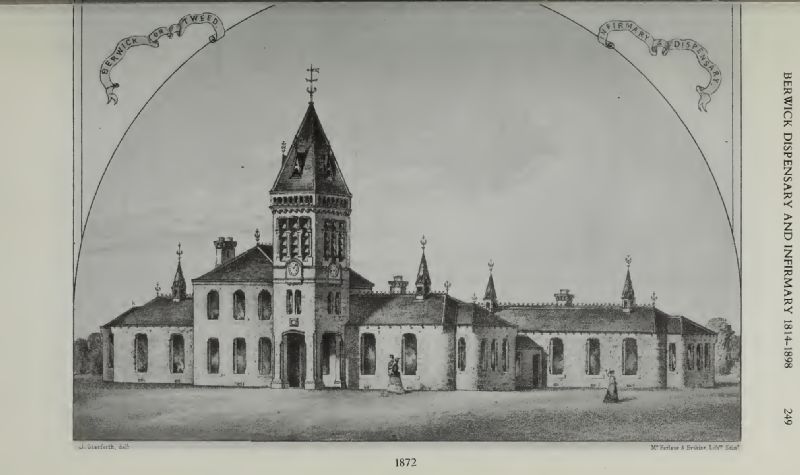Blog Contents | Start | End | Previous: Sod-You Architecture | Next: Corporal Boal: A Song for a Berwick Great War Hero

A vision of the new Infirmary by architect John Starforth, 1872
In 1870 the medical attendants proposed that the dispensary on the Quay Walls be sold and be replaced by a yet another new dispensary and possibly a hospital. The Board of Guardians of the Berwick Poor Law Union wanted a fever hospital at this time and there were some abortive discussions between the two bodies concerning the possibility of a joint venture. The old dispensary was sold in 1872 for £1,000 and a temporary dispensary in Eastern Lane took its place, while a site was secured in the Greenses for £159 12s 6d. According to a map dating to 1847, the land that the Infirmary is built on belonged to one William Smith, no doubt a Freeman. Plans for the venture were prepared by John Starforth of Edinburgh.
One point made in favour of having an Infirmary was that “injured patients requiring operation had up until then to go by train to Edinburgh and then by cab to the Infirmary for isolation or infection or operation”. It was further hoped that the new hospital would be available to "persons above the condition of paupers” as well as affording medical and surgical aid to the indigent”.
The estimate for building the new premises was stated to be £3,186 at the public meeting and that after allowing for investments and the price of the old dispensary, approximately £1,200 would still be needed. The meeting itself was a great success and raised £770. Later Mrs Jerningham of Longridge Towers (who had previously married to Captain Mather) donated £2,000 and the Mather Ward was named after her late husband, and £500 was given by Dr Kellock’s daughter in memory of her father who had retired in 1841, the last of the original medical attendants. Eventually the other original wards were named Maclagan (after Dr Philip Whiteside Maclagan, who also has the statue of Hygieia dedicated to him), and Weddell (after James C. Weddell who became secretary in 1859 and held the position until he died in 1882).